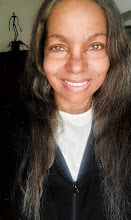Radical in Different Ways
 |
Martin Luther King & Malcolm X |
Critics compared Martin Luther King and Malcolm X, saying that X more accurately reflected a growing sentiment of young people in the black community, attitudes that created the Black Power Movement.
And King, they said, represented the old tradition of turning the other cheek.
Looking at the way these two men approached change, one would think that Martin Luther King was the elder of the two, choosing nonviolent protest; and Malcolm choosing "any means necessary." The elder being part of an older generation and the radical one being of the younger generation. The truth is Malcolm X was four years older than King.
Looking at the way these two men approached change, one would think that Martin Luther King was the elder of the two, choosing nonviolent protest; and Malcolm choosing "any means necessary." The elder being part of an older generation and the radical one being of the younger generation. The truth is Malcolm X was four years older than King.
- Martin Luther King, born January 15, 1929
- Malcolm (X) Little, born May 18, 1925
Some observers came to believe that Martin Luther King was not radical enough, professing the nonviolent style of protest, intended to shame the aggressor into a different behavior, even providing specialized training for protesters of the nonviolent persuasion, teaching them to resist the urge to fight back. Is peaceful resistance a radical approach? Some critics say peaceful resistance is more radical than fighting back because it is such an unexpected reaction.
While, on the other hand, Malcolm X stood for an "any means" approach to change, also radical because this approach had been prohibited by Jim Crow tradition, making a violent retaliation mob punishable by lynching to create extreme community fear.
While, on the other hand, Malcolm X stood for an "any means" approach to change, also radical because this approach had been prohibited by Jim Crow tradition, making a violent retaliation mob punishable by lynching to create extreme community fear.
| Malcolm Little |
| Martin Luther King |
These men of the same generation were diametrically opposed in their tactics. Could one reason have been their backgrounds?
Both their fathers were ministers, but that may be where their similarities ended.
Martin was born and raised in a stable, two-parent comfortable family home. Malcolm's father's activism caused the family to move frequently and may have caused the father's death when Malcolm was four years old. Afterwards his father was killed, his mother suffered a breakdown and was placed in a mental institution. Malcolm and his seven siblings were split up and placed in orphanages and foster homes.
 |
Malcolm (X) Little Mugshot |
| MLK Morehouse 1948 |
Malcolm became a street hustler, drug dealer, thief and prison convict. Martin attended college and amassed degrees and scholarly awards. Could their lives have accounted for their approaches to social change?
| Malcolm X |
| Martin Luther King |
It is a well accepted fact that Martin Luther King and Malcolm X were quite different in the way they sought social justice.
Although, they shared common ground.
- One: March 26, 1964
- Where: Washington, D.C.
- Occasion: Senate hearing on the bill that would become Lyndon Johnson's Civil Rights Act of 1964
- Length of meeting: One minute
Malcolm X meets Martin Luther King, Jr.
Martin Luther King based his approach to protest of Jim Crow treatment on nonviolence. Malcolm X based his his approach to protest of Jim Crow treatment on violence or "any means necessary," in his words. In your opinion, did either approach make one safer than the other?
- Malcolm X was assassinated on February 21, 1965.
- Martin Luther King was assassinated on April 4, 1968.
